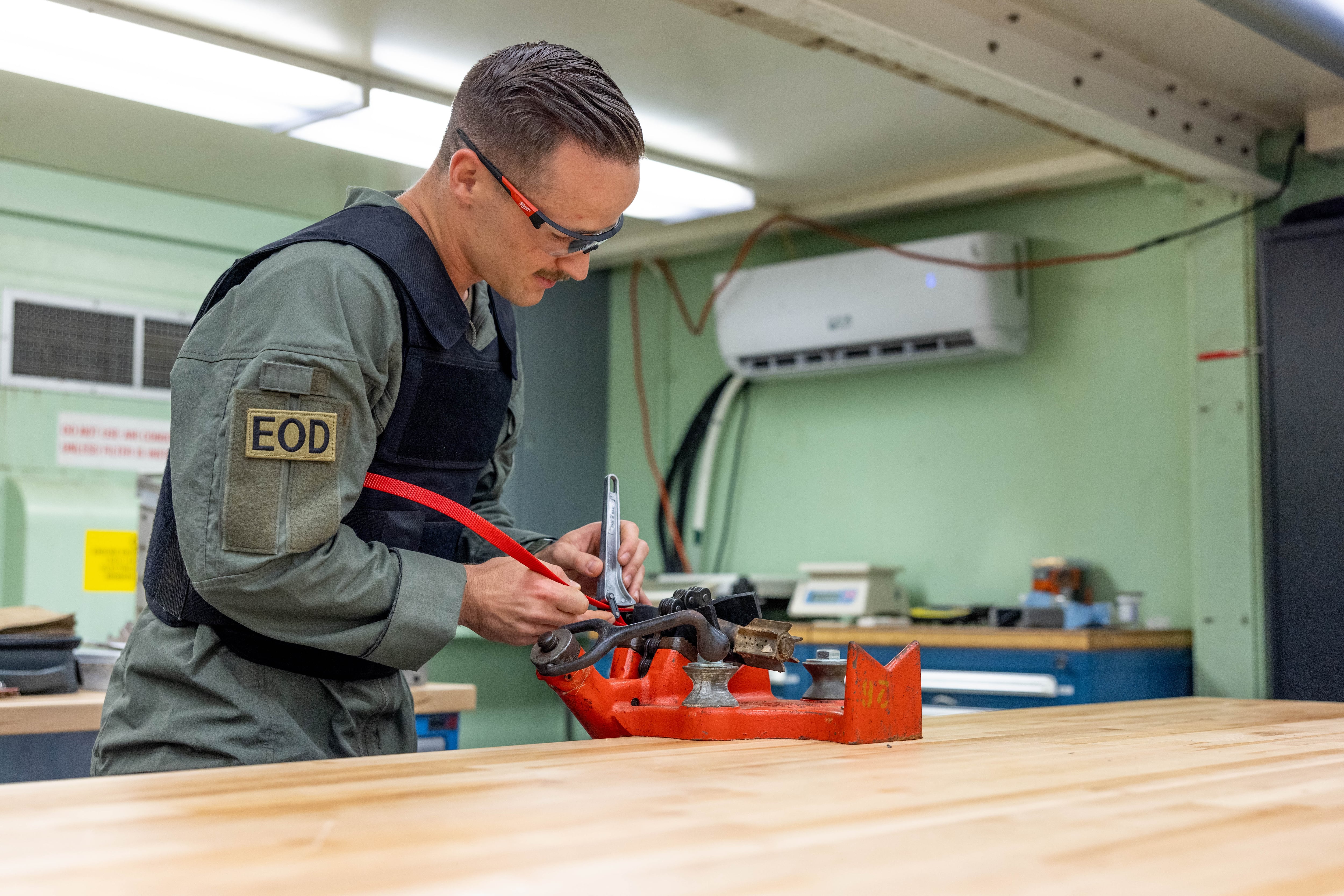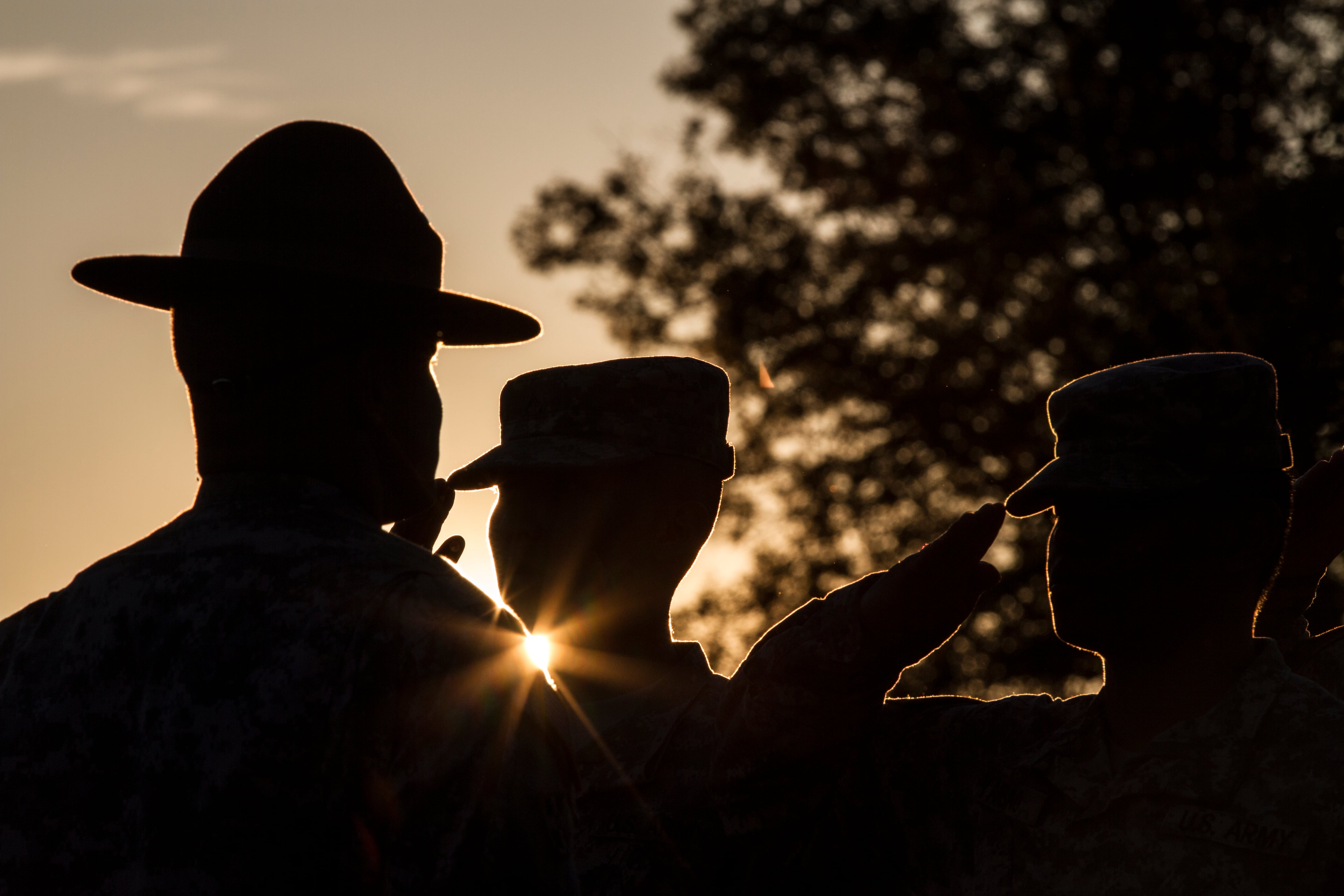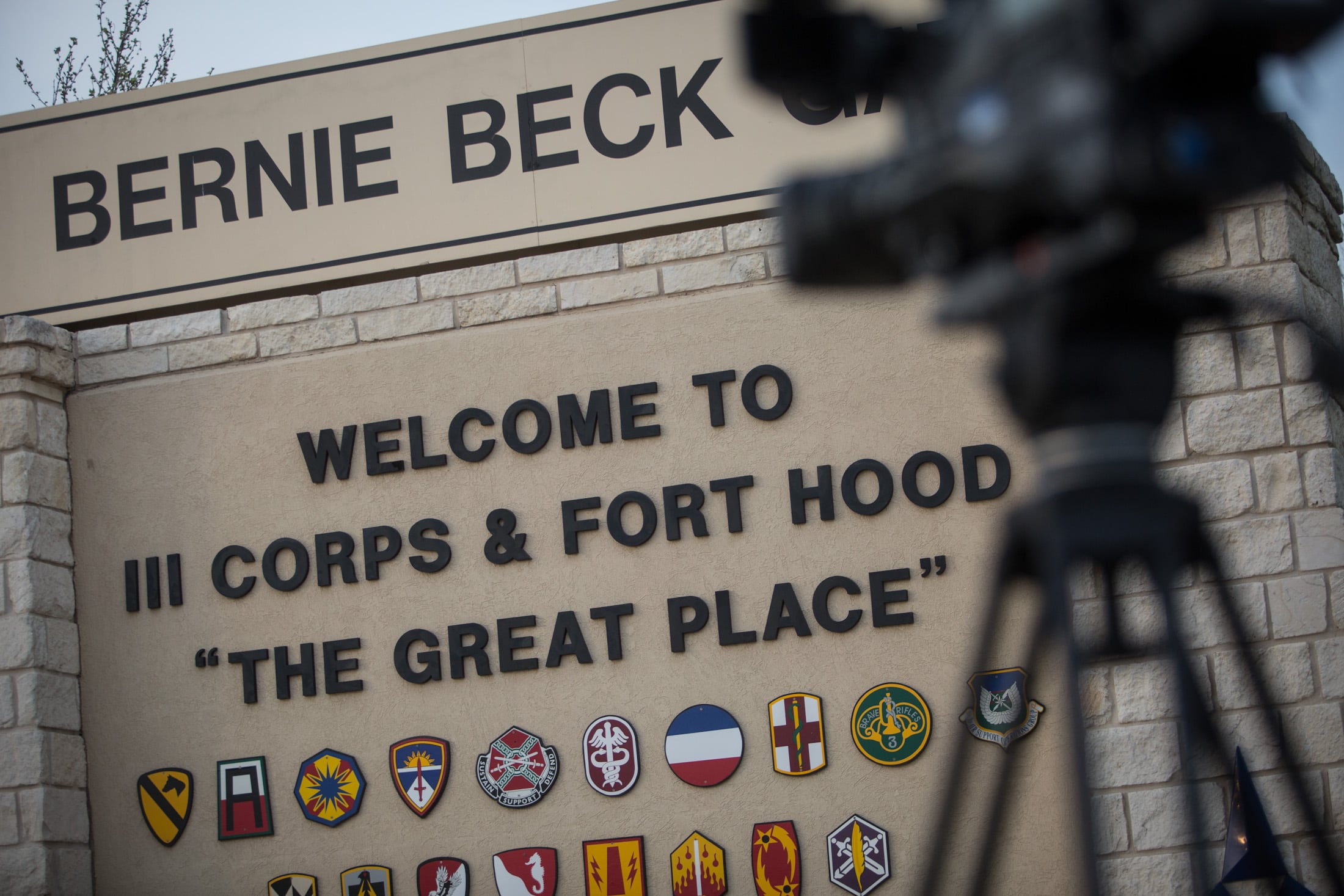In central Virginia, it’s not uncommon to unearth relics from Civil War battles. But finding a 50mm French mortar dating to World War II hidden in your backyard is something else entirely.
That’s what happened to Hunter Vap, a Marine veteran and resident of Orange, Virginia. After a midnight encounter with an ancient piece of unexploded ordnance, he’d enlist county officials — and ultimately explosives specialists from Marine Corps Base Quantico, about 70 miles away — to safely dispose of it.
Late on the evening of April 23, Vap was alerted by his dog to a fox prowling his property, where he keeps a small farm with pigs, chickens and turkeys. Vap told Marine Corps Times he was moving brush as he chased off the fox when his foot made contact with what felt like a glass bottle.
“I picked it up because, you know, it’s where the pigs kind of root up and clear the woods, and I didn’t want them to cut themselves on it or something,” Vap said. “So, I picked it up, and then saw the little fins on the bottom and realized that it wasn’t a glass bottle. And for a second I was like, ‘There’s no way this is actually what I think it is.’”
But the plunger and 55mm markings on the side of the mortar were unmistakable.
“I’d already picked it up,” Vap said. “I went and put it in the shed, so a pig didn’t touch it and turn into bacon.”

Vap said he’d later receive grief from county officials and coworkers for picking up and moving a potentially live and unstable mortar, particularly in light of his Marine Corps background.
The next day, he said, he and his wife Janessa, also a Marine Corps veteran, called over to the Orange County Sheriff’s Office for help disposing of the old mortar. County investigator Larry Griffith was wrapping up his workday when he got the call, but said he immediately headed out to assess the situation.
A retired Navy diver who spent part of his time in service working as a medic with SEAL teams, Griffith said he had another expert on speed dial: his oldest son, who spent eight years in the Marine Corps as a mortarman.
“When we got on scene and saw this, I actually took a picture of it and sent it to my boy, and he’s the one who identified it for me and kind of told me the make and model,” Griffith said. “And he’s like, ‘Yeah, I wouldn’t mess with it.’ I wasn’t going to anyways. If there’s one thing 20 years in the service taught me, it’s don’t play with possible unexploded ordnance.”
After reaching back to the sheriff’s office and contacting state authorities, the decision was made to call in Quantico experts to deal with the mortar. Within hours, two base explosive ordnance disposal technicians had arrived. Since the mortar was old and had been moved once without incident, the EOD techs wore light protection: flight suits, gloves and eyewear.
They placed the mortar in a padded ammo can for transport to stop it from jostling on the ride back to Quantico for further inspection, said Staff Sgt. Tyler Blatter, one of the EOD Marines.
Already, he said, he and his partner suspected the mortar was inert. When they got to Quantico’s demolition range, they X-rayed the mortar, which appeared to be empty. As a final precaution, the EOD team disassembled it days later, on May 1, officials said.
“I would think that it had gotten cleaned out over in Europe, or if it was brought back here at some point during or shortly after World War II,” Blatter said. It might have gotten sold at an ordnance road show, ultimately landing in the possession of the prior owner of the Vaps’ home, he guessed.
It’s not the first time Blatter has been called out to deal with old ordnance outside of a training range. Northern Virginia residents often find old cannonballs or projectiles dating back to the Civil War, he said, adding that EOD was once called to address a Vietnam-era illumination grenade discovered on the side of a road in Quantico, where it had been buried for an untold number of years.
In the wake of the mortar’s discovery, the Orange County sheriff’s office posted a reminder to the public not to touch or move any “military ordnance or unfamiliar explosive device” they come across.
Blatter said the Marines planned to give the mortar back to the sheriff’s office so they can display it, both as a way to preserve its history and as a public safety reminder.





